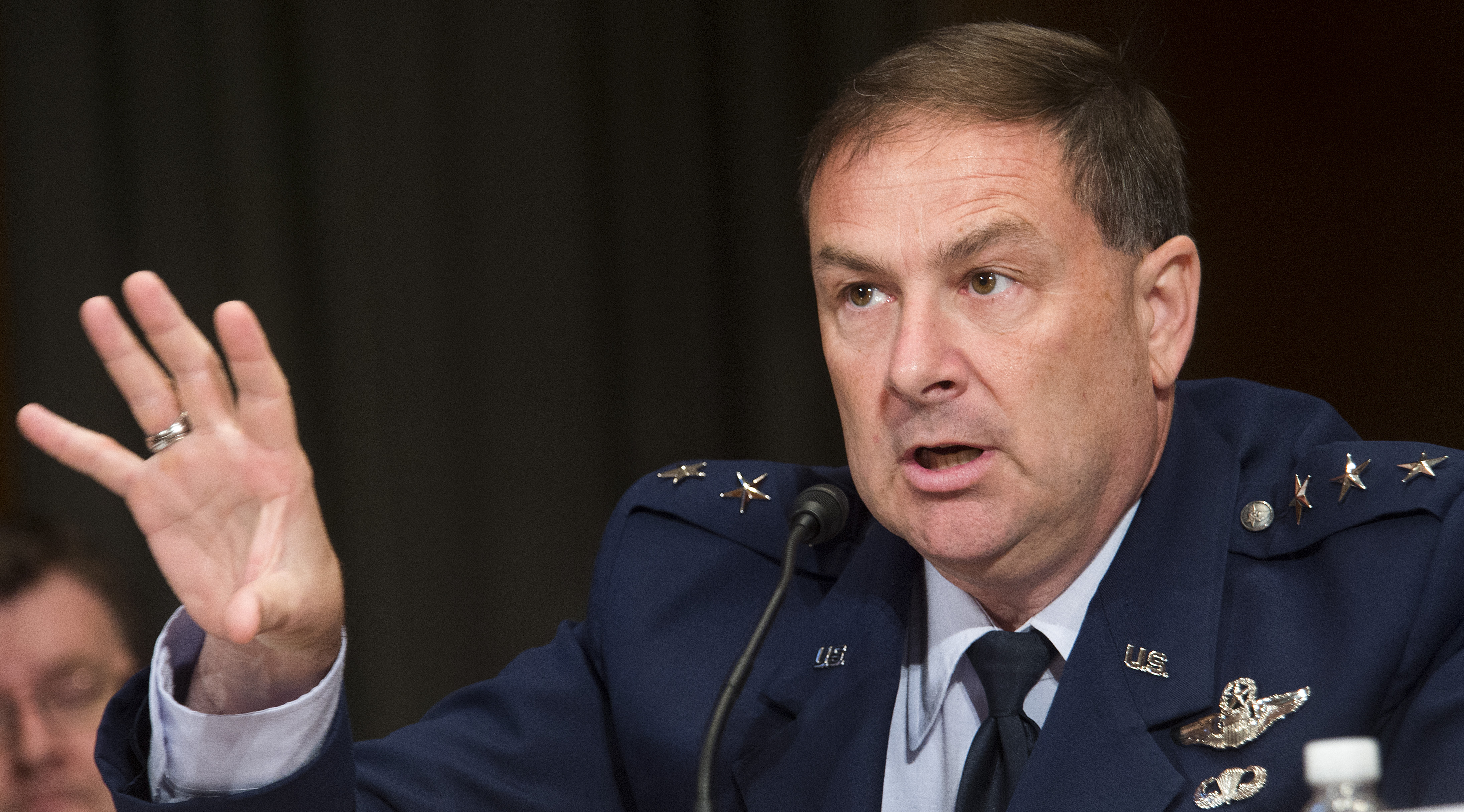Lt. Gen. Christopher Bogdan, shown here, the longest-serving F-35 program executive officer, will retire. His deputy, Navy Rear Adm. Mathias Winter, has been tapped for a third star and to serve as his replacement. Air Force photo by Jim Varhegyi.
Lt. Gen. Christopher Bogdan, director of the Joint Strike Fighter program since 2012, will retire in the coming weeks, and his deputy, Rear Adm. Mathias W. Winter, will take over as soon as the Senate confirms his promotion to vice admiral, according to a Defense Department announcement and Pentagon officials.
Winter is not expected to have to testify prior to his confirmation, but the Senate has not yet set a date for a slate vote; five other Navy flag promotion nominations were announced along with his. With the change in uniformed leadership, the civilian oversight of the F-35 program will also change. While Bogdan reported to Navy acquisition chief Sean Stackley, Winter will report to the Air Force’s service acquisition executive, a post vacant since late 2015, but being covered by Darlene Costello, principal deputy assistant secretary for acquisition and logistics.
Bogdan succeeded Adm. David Venlet at the helm of the F-35 program, after Venlet secured additional funding and time from Congress to get the program, then behind schedule and way over cost, back on track. Bogdan has said repeatedly since then that the system program office will not ask for more money or time to complete the project. Shortly after assuming the post, he described the relationship with prime contractor Lockheed Martin as “the worst I’ve ever seen,” putting the company on notice that he would be a hard bargainer and demand performance to a much higher level than some of his predecessors.
As recently as last week, Bogdan said he expects the F-35 system design and development (SDD) phase to wrap up on schedule by the end of the year, as long as the Pentagon allows some shuffling of final flight testing. The Pentagon’s operational test community has expressed skepticism that SDD will conclude on time, anticipating spring of next year as more realistic.
During Bogdan’s tenure—the longest of any F-35 program director—the cost of F-35s has declined, lot over lot, and he said last week that the newest cost goal in then-year dollars is $80 million per jet, engines included, by 2020. Bogdan recently turned around President Trump’s perception of the F-35 as a program that is “out of control,” explaining the project has been on track for the last five years and that Trump’s information was out of date. Trump has since referred to the F-35 as a well-run project, and he praised Bogdan’s leadership specifically.
Winter, a 32-year Navy officer, joined the F-35 program as deputy in December 2016. He was a bombardier/navigator in A-6E Intruder attack jets before moving to a series of program and technology jobs. He was program executive officer for tactical aviation, and worked on programs such as the Tactical Tomahawk, the Joint Standoff Weapon, and as Precision Strike Weapons program manager. He commanded the Naval Air Warfare Center Weapons Division at China Lake, Calif., and was PEO for Unmanned Aviation and Strike Weapons, where he shepherded the successful unmanned X-47 program, which has evolved into the Navy’s UCLASS project. Before the F-35 job, Winter was chief of Naval Research. Winter has previously worked on the F-35, once as executive assistant to the to the PEO and also as head of F-35 Integrated Flight and Propulsion Control.
